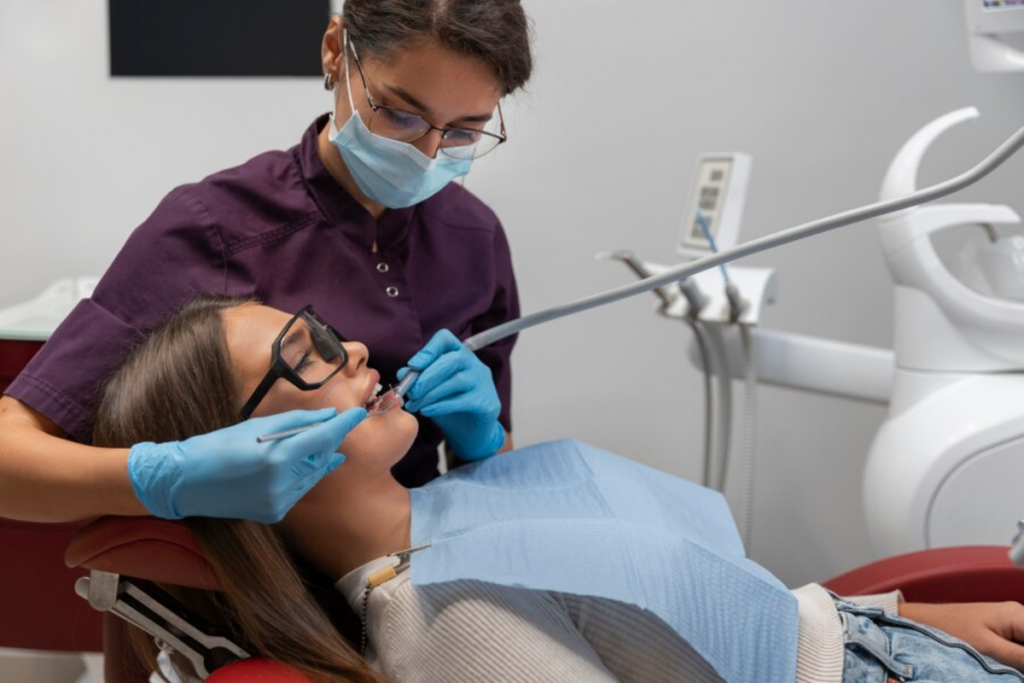Retreating a root canal may sound scary, but once you know more about it, it’s less of a mystery and easier to handle. Whether you need to schedule a retreatment you’d like to speak with a dentist first, our team at Kailash Dentistry is here to help you navigate this process. Please get in touch today to get started.
Understanding the Need for Retreatment
First, why might you need a second root canal treatment near you? The treatment is likely to work the first time, but problems can happen over time. Some of these are chronic pain, infections that come back because the canal wasn’t cleaned well enough, or complicated structures that weren’t fully addressed in the first operation. The goal of retreatment is to fix these problems and save the tooth so that it doesn’t need to be pulled out.
Here is what you can expect during your appointment:
1. Preparation and Evaluation
Before beginning the retreatment process, your dentist will carefully examine your health. This usually means reviewing your dental history, determining what’s wrong, and taking X-rays to see what’s happening inside your tooth. These steps help the dentist determine what went wrong and how to make things right on the next visit.
2. Anesthesia and Comfort Measures
While getting root canal therapy in Etobicoke, the dentist will ensure your safety and comfort. They will use local anesthesia to numb the area so that you do not feel any discomfort during the treatment. Also, sedation may be a choice if you are nervous about going to the dentist or if the procedure is long or complicated.
3. Accessing the Root Canal Tooth
Now that the area is numb and you are calmer, the dentist will remove the tooth to access the infected or affected tooth. To do this, tooth restorations like fillings or crowns must be removed to reach the pulp chamber below.
4. Cleaning and Disinfection
The real work starts once your dentist can access the previously treated area. They will carefully clean and shape the nerves using special tools while removing any infected or damaged tissue. This step is important because it removes any bacteria or other debris that may have been left or built up since the first treatment.
5. Temporary Filling
After the canals are cleaned and medicated, a temporary filling is put in to fix the tooth. This keeps the tooth safe while the dentist checks how well the treatment worked and decides what to do next.
6. Follow-Up and Final Restoration
After being watched, you’ll visit your dentist near you for the last steps to ensure the tooth responds well to the retreatment. Usually, this means removing the temporary filling, cleaning and sanitizing the nerves again (if needed), and then sealing them with a permanent filling material or any other restoration. That’s it. A new repair, like a filling or crown, is put on the tooth to make it stronger and safer.
7. Post-Treatment Care
After the retreatment, your dentist will tell you how to care for your newly fixed tooth. This could include suggestions for dealing with pain, what foods or activities to avoid that could damage the tooth, and when to return for follow-up appointments to ensure the treatment worked.
Benefits and Risks
It is important to know the possible benefits and risks of root canal retreatment to save a tooth that has been damaged. Some benefits include getting rid of pain and infections, protecting the natural structure of the teeth, and getting the mouth to work normally again.
However, as with any dental process, there are risks. For example, the treatment could fail, problems could arise during the procedure, or more work might be needed.
Our Dental Team is at Your Services
The team at our local dental practice believes in making smiles look great and making people feel good about themselves. We are your trusted oral health partners, dedicated to giving you personalized and caring care to ensure that your results last.
As your dentist in Etobicoke, we put your comfort first because going to the dentist should feel like seeing an old friend. Contact us today.


